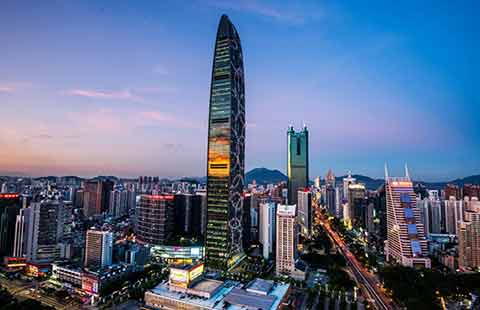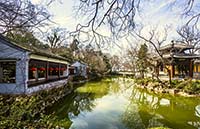Work starts on China's third-largest hydro project
By Lyu Chang (China Daily) Updated: 2015-12-25 07:46Construction work on the major parts of the Wudongde hydropower project, China's third-largest dam, started on Thursday, with the first batch of units expected to be commissioned by 2020.
China Three Gorges Corp, the builder and operator of the project in southwestern China, said the successful commissioning of the project will help China achieve its clean energy goals 2020. The project got the green light from the State Council earlier this month.
Lu Chun, CTG's chairman, said that with a total investment of about 100 billion yuan ($15.4 billion), the Wudongde hydropower plant will drive investments for the other related industries such as equipment manufacturing and heavy machinery.
"It will be a major project to stabilize economic growth during the 13th Five-Year Plan (2016-20) and a key power source for the massive west-to-east electricity transmission project," he said.
Located at the mainstream of the Jinsha River between Donghui county of Sichuan province and Luquan county of Yunnan province, the Wudongde hydropower station, also the world's seventh-largest dam including those under construction, will have a total installed capacity of 10,200 megawatts, CTG said.
After completion, the Wudongde Dam, which is expected to generate about 39 billion kilowatt-hours every year, will help reduce 30.5 million metric tons of carbon dioxide emissions, and save about 12 million tons of coal equivalent per year, it said.
China, the world's top hydropower market, will build more hydropower plants during the next five years, as the country plans to increase the share of non-fossil fuels in its energy mix to around 15 percent by 2020, experts said.
"The country will need more hydropower to cut its carbon footprint, because hydropower is a very reliable source and meets the increasing demand for energy consumption," said Zhang Boting, deputy secretary-general of the China Hydropower Engineering Society.
The hydropower capacity in China already exceeds that of Brazil, the United States and Canada combined and accounts for about 27.4 percent of the total hydropower generation.
- Chinese customs officials plan more Belt and Road partnerships
- Big Cat on the prowl for more market share
- Flat-panel Television sales to remain static next year
- Industrial output to drag economic growth in China in 2016
- Nike defies sales stagnation with China a standout
- China to lower on-grid price of wind power, PV power
- China seeks reform, not revolution, of current int'l order
- Launch of Hungary-Serbia railway marks new start of China-CEE cooperation

















